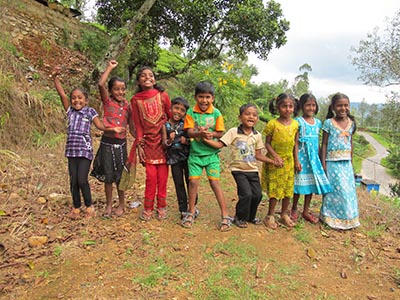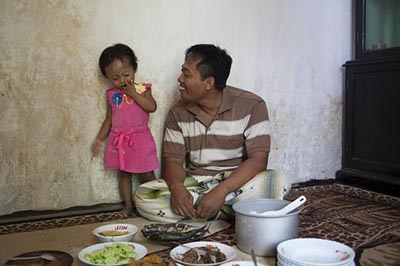 By Giovanna Lauro & Margaret E. Greene
By Giovanna Lauro & Margaret E. Greene
Marriage is an institution that most adults do not enter into lightly; there’s a general recognition that the terms and conditions of that relationship will shape their lives profoundly, and that self-awareness and maturity are necessary preconditions for marriage. Over the past five years, the world has begun to pay more attention to how often these conditions are not met, more specifically to the prevalence of marriages entered by children, mostly by girls.
Every year, over 14 million girls marry under the age of 18 – that’s around one girl every two seconds. The number is growing: according to UNFPA estimates, by 2030 there will be over 15 million child brides each year.
While both boys and girls may experience child marriage, girls are disproportionately affected by it; furthermore, entering into a marriage as a child rather than later in life brings with it severe and long-lasting consequences. Child brides are twice as likely to be victims of domestic violence than their peers who marry later. Girls are also twice as likely to contract sexually transmitted diseases such as HIV than boys of the same age. Girls also face significantly higher risks of dying during pregnancy and childbirth than women in their 20s – complications from pregnancy and childbirth being the leading cause of death for girls between the ages of 15 and 19 in poorer countries. Stillbirths and deaths of newborn babies are 50% higher among mothers under the age of 20 than among women who get pregnant in their 20s. Finally, child marriage often prevents girls from continuing their schooling, and inhibits them from breaking out of poverty.
The causes of child marriage are complex and often interrelated; some of these include poor economic conditions, traditional practices and sustained denial of human rights. In low-income families, the lack of economic alternatives contributes to the practice, as marriage to an older man may be seen as bringing economic security – for the girl and sometimes for her entire family. Furthermore, disasters and emergencies may increase economic pressure on households, making child marriage a common practice where it was not previously acceptable. In many contexts it is considered normal for young adolescent girls to marry older men and is justified as a tradition or customary practice essential to preserving a family’s ‘honor’ and a girl’s virginity. In a broader sense, the acceptance of marrying a girl as a child is part of a cluster of social norms and attitudes that do not value the human rights of girls. In this sense, child marriage is symptomatic of social and cultural traditions, attitudes, and beliefs that deny women and girls their rights and stifle their ability to play an equal role in their homes and communities.
Though the data are inconsistent and of low quality in some settings, we know that child marriage is a ‘universal’ issue in the sense that it occurs in every region, among people of every religion.
While the rates entering child marriage are highest in Sub-Saharan and Western Africa, the greatest number of child marriages takes place in South Asia. Its prevalence is considered relatively low in Europe, East Asia, and North America – yet, the practice is far from eradicated even in these settings. In Europe, countries with the highest rates of early marriage include Georgia, Turkey and Ukraine. In Britain and France, it is estimated that at least ten percent of adolescents marry before the age of 18. As for Latin America, most research and interventions targeting child marriage have focused on Central America. Even though Brazil has largely been absent from global discussions about child marriage, as of 2012 it was listed among countries with a high prevalence of the practice. Over 42,700 girls aged 10-14 were already married at the time of the 2010 Census. Many of these are informal unions since it is illegal to marry below age 14.
More segmented analyses of the diverse expressions of child marriage are needed, analyses that cover not only geographic variety, but religion, ethnicity, education, social class and so on. Coordinated action is needed to address one of the great injustices of our time, and something that remains largely invisible as a problem, despite its prevalence as a practice. The magnitude of child marriage is all the more remarkable for the absence of focused efforts on the world’s rights and development agenda at the scale required to end this practice, and for the absence of these girls in the economic, political and social lives of their countries. Because traditions and institutions treat girls as less than full citizens, provisions for girls’ rights are irrelevant unless people like us work to bring them alive.
are needed, analyses that cover not only geographic variety, but religion, ethnicity, education, social class and so on. Coordinated action is needed to address one of the great injustices of our time, and something that remains largely invisible as a problem, despite its prevalence as a practice. The magnitude of child marriage is all the more remarkable for the absence of focused efforts on the world’s rights and development agenda at the scale required to end this practice, and for the absence of these girls in the economic, political and social lives of their countries. Because traditions and institutions treat girls as less than full citizens, provisions for girls’ rights are irrelevant unless people like us work to bring them alive.
Along with being an end in itself, taking action to eradicate child marriage is also integral to dealing with issues of sexual and reproductive health and rights, gender-based violence, young women’s economic empowerment and the development of the communities they live in. Even though most countries have established minimum age-at-marriage laws, sometimes families are not even aware they are breaking the law. In some countries, legislation, albeit present, is not matched by adequate implementation and enforcement. Experiences in diverse settings have shown that combining adequate legislation and policies with initiatives aimed at changing social norms can yield positive results – especially if they simultaneously provide viable alternatives to marriage such as schooling. An important step to enhance the impact of such initiatives is represented by engaging men and boys as positive deviants: a father who agrees to delay the timing of their daughter’s marriage; a young man who decides to challenge his young sister’s marriage; a family member who prevented a child marriage; or a man who has changed his attitudes about it.
Involving men and boys in the prevention of child marriage builds on a body of research showing that adolescent girls benefit from involved male caregivers. They tend to be less subject to sexual violence or unwanted, early sexual activity, are more likely to have better self-esteem and body image, more likely to delay sexual debut and to seek partners who emulate qualities of gender equality, like their male role models.
All girls should have the right to freely decide if, when, and whom they choose to marry. For this to become reality, interventions must not only accomplish, but reach beyond girls’ access to education and economic livelihoods, to also target societal expectations and attitudes towards child marriage. By challenging widely accepted social norms and engaging key gatekeepers – such as fathers, religious and traditional leaders – at their basic level, interventions must address issues of gender and sexuality, positioning girls as full human beings with intrinsic value and inalienable human rights.